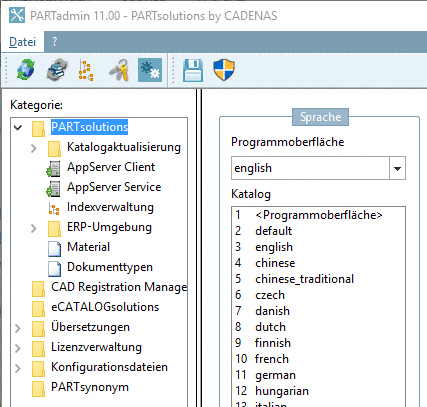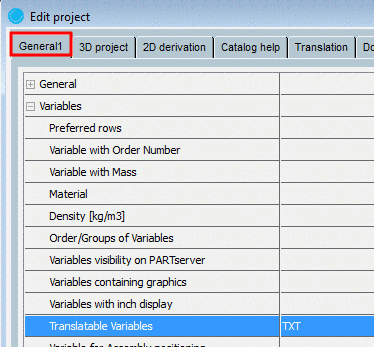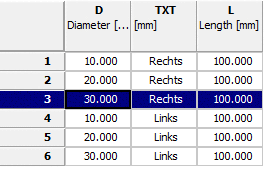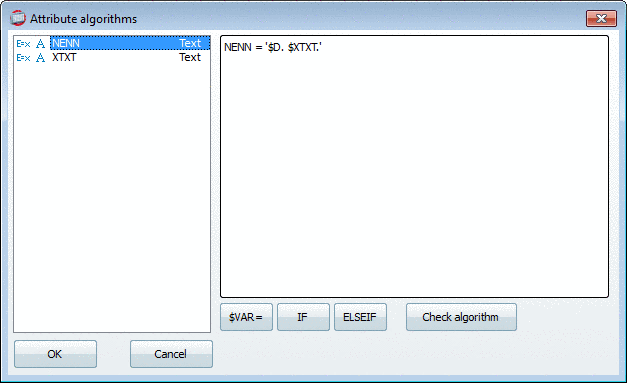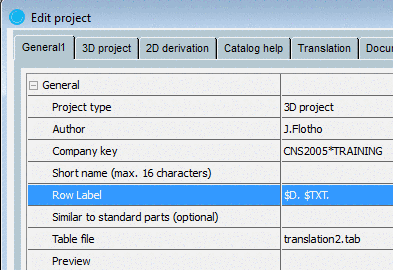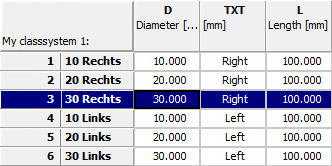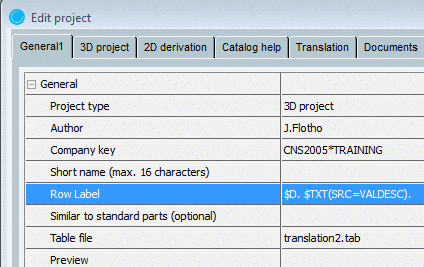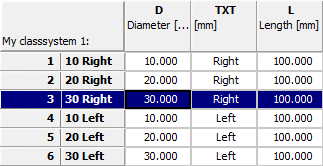Manual
Login
Our 3D CAD supplier models have been moved to 3Dfindit.com, the new visual search engine for 3D CAD, CAE & BIM models.
You can log in there with your existing account of this site.
The content remains free of charge.

Top Links
Manual
In order for translations to be really displayed in PARTdataManager (Row Label, 2D derivation, PDF- Data sheet, etc.), the following preconditions have to be fulfilled:
-
In PARTadmin, the desired catalog language has to be set (either as default of the user interface or explicitly).
-
The variables to be translated have to be stated in PARTproject, on the tabbed page General under Translatable Variables.
Not until they are stated here they are displayed on the tabbed page Translation.
-
The translations have to be displayed on the tabbed page Translation in black color. A grayed out display just signalizes a translation suggestion. In order to overtake a suggestion, click into the desired field and confirm with the return key or click into the desired field with the secondary mouse key, select the context menu command Edit value and confirm with .
In the following the functions are exemplarily explained:
Some examples are found in the training catalog, in the directory "translation".[53]
-
Example 1 - Translation of a fixed term
[head_cap_bolts] German=Zylinderschrauben Default=Head Cap Screws English=Head Cap Screws
Insert the default term into the function TRANSLATE.
TRANSLATE('Head Cap Screws')For catalog language "german" the result would be: "Zylinderschrauben"
-
Example 2 - Translation of a variable
![[Note]](/community/externals/manuals/%24%7Bb2b:MANUALPATH/images/note.png)
Note When using a variable in the form $VARIABLENNAME. always its internal value is returned.[a] However, if you want to work with the visible, translated value (in the Row Label, Data sheet, 2D derivation, etc.), you can use the function "TRANSLATE(VARIABLENNAME)".
[a] This is important, because there are attribute algorithms, which access the internal value by this in order to work with it.
Here in this example the function TRANSLATE is used together with a help variable.
[head_cap_bolts] German=Zylinderschrauben Default=Head Cap Screws English=Head Cap Screws
-
Here in the example, in the first step, a fixed value is assigned to a variable. Just as well you can directly reference to a table variable. On this see example 3.
A = 'Head Cap Screws'
-
Translation of the variable and assignment to a help variable.
B = TRANSLATE(A)
When querying "B" for catalog language "german" the result would be: "Zylinderschrauben"
-
-
Example 3 - Translation of a variable: Translation of text under Row Label
Initial situation: The column TXT contains values to be translated.
-
Example 4 - Translation of a variable: Translate text in the Row Label
![[Note]](/community/externals/manuals/%24%7Bb2b:MANUALPATH/images/note.png)
Note When using a variable in the form $VARIABLENNAME. always its internal value is returned.[a] However, if you want to work with the visible, translated value (in the Row Label, Data sheet, 2D derivation, etc.), you can also use the function "$VARIABLENNAME(SRC=VALDESC)." as an alternative to TRANSLATE.
[a] This is important, because there are attribute algorithms, which access the internal value by this in order to work with it.
Initial situation: The column TXT contains values to be translated.
Under PARTproject -> tabbed page General -> Row Label, insert the following expression:
$TXT(SRC=VALDESC).
The following figures clarify the difference between the simple use of a variable an the above function:

